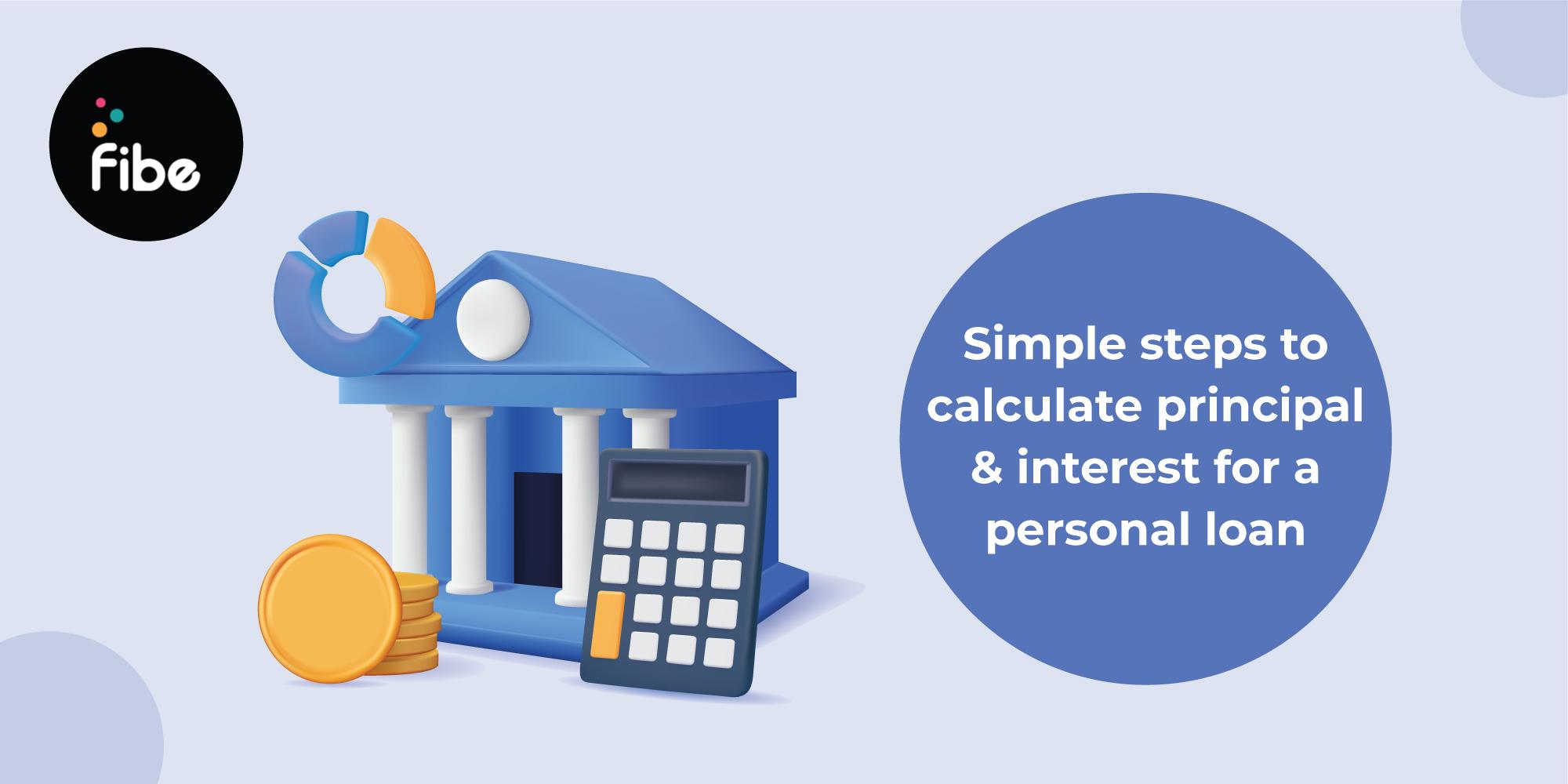- Home
- Blogs
- Personal Loan
- What Is Principal Amount And Interest
What is Principal Amount and Interest? Full Explanation with Examples
Reviewed by: Fibe Research Team
- Updated on: 24 Apr 2025
Reviewed by: Fibe Research Team

When you take a loan, three things decide how much you’ll repay in total — the loan principal amount, the interest rate, and how long you take to repay it. That’s why it’s super important to understand how these factors affect your loan and monthly budget.
By calculating the interest in advance, you can see if the loan fits your needs and even tries to negotiate better terms. This can help you save a good amount over time!
Let’s break down how to calculate the principal and interest with simple examples — plus some smart tips to lower your total interest.
A principal is the sum of money you borrow from your lender. Similarly, interest is the cost of borrowing for extending their services and is a percentage of the principal charged by the lenders. These numbers form the core factors for calculating your interest and EMI amount.
When you apply for a loan, the lender offers you an interest amount based on your eligibility, which dictates your borrowing costs. You can calculate your monthly loan instalment with the formula:
EMI = [P X R X (1+R) ^N]/[(1+R) ^N-1]
Where P = Principal, R = Annual interest rate, N = Total tenure
While manual calculations can get tough, using an online personal loan EMI calculator is ideal to get accurate results. Note that each EMI payment goes toward clearing the loan principal and interest charged.
The interest is computed based on your outstanding loan amount. The Annual Percentage Rate (APR) implies the annual cost of your loan. It includes various other costs, such as:
Therefore, you can calculate the interest paid for the first month with the formula:
Interest Repayment = Principal Loan Amount X Annual Percentage Rate /12
After calculating the interest, you must subtract this sum from the EMI to calculate the principal amount paid. Thus, the principal amount formula is:
Principal Repayment = EMI – Interest Repayment
This Principal Repayment is then subtracted from the opening loan principal. It is done to calculate the outstanding principal:
Outstanding Principal = Opening Loan Amount – Principal Repayment
This way, you can calculate next month’s interest repayment amount using this outstanding principal. Following steps until the end of tenure will create an amortisation schedule.
The interest amount can be calculated with the simple formula:
SI = (P X R X T)/100
In this formula, P stands for principal amount, R stands for the rate of interest, and T stands for time or tenure.
To find the principal amount within a simple interest investment or loan, the applicable formula is:
A= P (1+rt)
In this formula, ‘A’ is the current value known, ‘r’ will be the decimal value of interest rate per time, and ‘t’ will be the time period number.
Here’s an example to better understand the process of calculating the principal amount and interest. Say you take a personal loan of ₹25,000 and your interest rate is 16% p.a. for a tenure of 12 months. Then:
P = ₹25,000, R = 16%/ 12 or 1.3% per month, N = 12 months
So, EMI = [P X R X (1+R) ^N]/[(1+R) ^N-1] = ₹2,268. EMI = ₹2,268
Now, the principal amount will attract interest as such:
To calculate the principal paid in the first month:
To calculate the outstanding balance:
Using this outstanding balance, we calculate the interest for the next month and so on.
Since a high interest affects your total repayable amount and your EMI, you must opt for the lowest interest option to save more. Here are a few steps you can follow for doing so:
Note that these terms depend highly on your eligibility and credit behaviour. A high credit score and good repayment history result in lenders offering loans at an attractive interest rate.
With the Fibe Instant Cash Loan, you can easily get an amount of ₹5 lakhs at a nominal interest rate with quick disbursal. You can also choose from a flexible tenure range of up to 36 months. Download the Personal Loan App on the Google Play Store or App Store or visit our website to apply now!
The principal amount is the amount of loan applied by an individual or a business entity. You can find it in the loan agreement provided by the lender.
The formula for calculating principal in Excel is:
=PPMT (rate, period, number_of_periods, present_value)
In the formula,
The principal amount on the loan is the sanctioned value credited to your bank account by the lender. So, if you apply for a ₹5 lakhs loan, this amount is your principal amount.
No. According to the India Code States Act, a lender cannot charge an interest sum that is greater than the principal or loan amount.